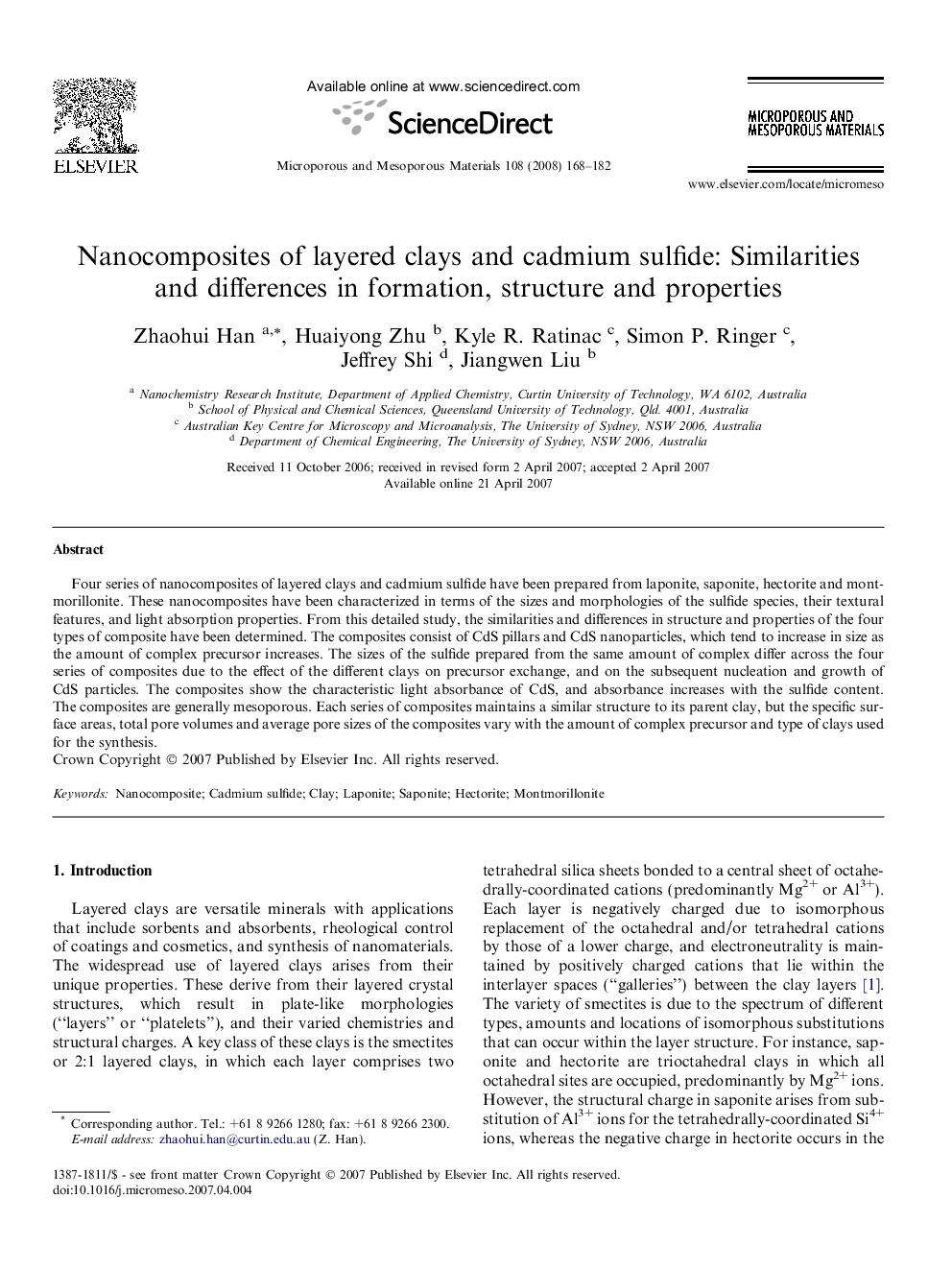| Article ID | Journal | Published Year | Pages | File Type |
|---|---|---|---|---|
| 75987 | Microporous and Mesoporous Materials | 2008 | 15 Pages |
Four series of nanocomposites of layered clays and cadmium sulfide have been prepared from laponite, saponite, hectorite and montmorillonite. These nanocomposites have been characterized in terms of the sizes and morphologies of the sulfide species, their textural features, and light absorption properties. From this detailed study, the similarities and differences in structure and properties of the four types of composite have been determined. The composites consist of CdS pillars and CdS nanoparticles, which tend to increase in size as the amount of complex precursor increases. The sizes of the sulfide prepared from the same amount of complex differ across the four series of composites due to the effect of the different clays on precursor exchange, and on the subsequent nucleation and growth of CdS particles. The composites show the characteristic light absorbance of CdS, and absorbance increases with the sulfide content. The composites are generally mesoporous. Each series of composites maintains a similar structure to its parent clay, but the specific surface areas, total pore volumes and average pore sizes of the composites vary with the amount of complex precursor and type of clays used for the synthesis.
